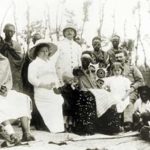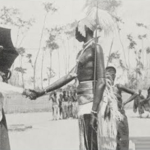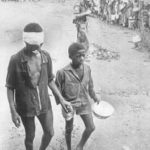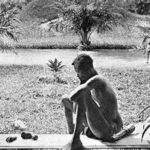The Social Preconditions of Revolution
Revolutions are often seen in terms of a spontaneous burst of political activity of great intensity. Less attention is generally given to the social preconditions of revolution-the structures, processes, and perceptions that make such activity possible. This book reflects on such long-term transformations as they relate to the Rwandan Revolution, focusing on changes in client-ship institutions, the expansion of labor control systems, and the development of ethnic cleavages. While these are processes important to the history of Rwanda, they are also found in colonial and neocolonial contexts elsewhere in Africa; the significance of the analysis presented in subsequent chapters, therefore, transcends the boundaries of a single local area. The conceptual approach developed here attempts to explain how in southwestern Rwanda these processes were molded by the growth of state power, and how the interactive impact of these changes affected rural political consciousness, creating the preconditions for revolution.
While the Rwandan Revolution proper lasted less than two years, from 1959 to 1961, its effects were far-reaching. The monarchy was abolished, replaced by a republican government with a popularly elected assembly. The ethnic composition of the ruling group was drastically altered, as Hutu leaders, members of the majority (but formerly subordinate) group, replaced the earlier Tutsi rulers. And relations between rulers and others also changed in important ways. The primary focus of this study, however, is not on the revolution itself and its outcome, but on the span of some one hundred years that preceded the revolution. This period began with the reign of Rwabugiri, a king who greatly increased the power of the Rwandan central court over both internal and extemal affairs. His reign, which extended over the last
third of the nineteenth century, was followed closely by the imposition of German colonial rule (in 1898). During World War I Belgium supplanted Germany as the colonial power in Rwanda.
The kingdom of Rwanda held a remarkable fascination for a succession of early travelers, missionaries, and colonial officials who came to know it. But the highly developed state system, the relatively clearly defined forms of social stratification, and the apparently rigid divisions between the three major ethnie groups—Hutu, Tuutsi, and Twa—in this supposedly “remote” kingdom also attracted the attention of scholars after World War II. Historians, anthropologists, political scientists, and others (supplementing the substantial ethnographic and historical work on Rwanda by missionaries and administrators) studied the nature of the Rwandan state, the impact of European colonialism on it, and the polarization of ethnic relations in the 1950s. Such theoreticians applied primarily functionalist models to their study of Rwanda. This has provided much provocative theorizing. But on the basis of both the earlier missionary accounts and recent studies at the local level in Rwanda, it has becorne clear that a rethinking of these models is required. The time has now come to combine theoretical approaches and new empirical research.
When I first undertook work on this project in 197o, my initial research design wag influenced by this earlier literature and by the concepts of “political development” that so preoccupied American political scientists of the 1960s. I had intended to examine the role of patron–client ties in promoting political and social integration in Rwanda. In the course of my field work, however, this focus shifted in important ways. While it builds on earlier work—much of it of great value—the perspective on Rwandan political development presented here differs from such earlier interpretations in two major respects. Much of the earlier work tended to concentrate on the study of the Rwandan royal court; this book adopts a local-level perspective and tries to account for the activities and perceptions of both those not related to the central court network and those who were. Most of the earlier studies assumed that social stratification, ethnic cleavage, and clientship institutions were rigid, unchanging “givens” of precolonial Rwandan society which were little changed by colonialism; the analysis here questions those assumptions. To explain this shift in perspective it is necessary to look briefly at the prevailing model of the precolonial Rwandan sociopolitical system portrayed in earlier studies and to discuss how it has been used in explanations of the Rwandan Revolution.
https://uk.amateka.net/the-social-preconditions-of-revolution/https://uk.amateka.net/wp-content/uploads/2020/04/cohesion.pnghttps://uk.amateka.net/wp-content/uploads/2020/04/cohesion-150x150.pngChanges and ColonialismRevolutions are often seen in terms of a spontaneous burst of political activity of great intensity. Less attention is generally given to the social preconditions of revolution-the structures, processes, and perceptions that make such activity possible. This book reflects on such long-term transformations as they relate to the Rwandan...BarataBarata rpierre@ikaze.netAdministratorAMATEKA | HISTORY OF RWANDA




